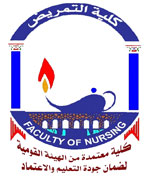BACKGROUND: Uncorrected refractive errors are a public health problem especially among school
children. It has a direct effect on learning and academic performance. AIMS OF THE STUDY: This study
aims to assess the refractive errors among a representative sample of school children under ten in Assiut City,
Egypt and to manage the discovered cases early. SUBJECTS AND METHODS: Descriptive cross sectional
study design was used. The students of primary schools in the first, second and third grades under ten years old
were the focus of the study and they were selected by stratified random sampling technique. The calculated
sample size was 196. Two tools were used in the study; the first one was a self administered questionnaire to
collect sociodemographic data as child age, birth order, father's and mother's education and occupation, family
history of wearing glasses, watching TV or using computer etc. The second tool was the eye examination by a
Portable Auto-refractometer which has the advantages of accuracy, easy examination, being movable
everywhere and provide printable eye status report. An eye examination record was used to register data about
student's name, age. Data collection started from the first of March 2012 until the end of April 2012. Data were
analyzed using SPSS soft program version 16. RESULTS: 241 students (107 males and 134 females)
participated in the study but 142 only agreed to perform eye examination with 59% response rate. Ninety-five
children (66.9%) had a significant refractive error of ±0.50 or worse in one or both eyes. CONCLUSION AND
RECOMMENDATIONS: Significant refractive errors occur among primary school children aged 6 to 10 years.
Therefore, there is a need to have regular and simple vision testing in primary school children to screen for
refractive errors. This will enable to start corrective measures at the early stage and decrease visual disability.
Research Department
Research File
Research Journal
Journal of Education and Practice
Research Member
Research Publisher
NULL
Research Rank
2
Research Vol
Vol.5, No.1
Research Website
NULL
Research Year
2014
Research_Pages
NULL
Research Abstract

